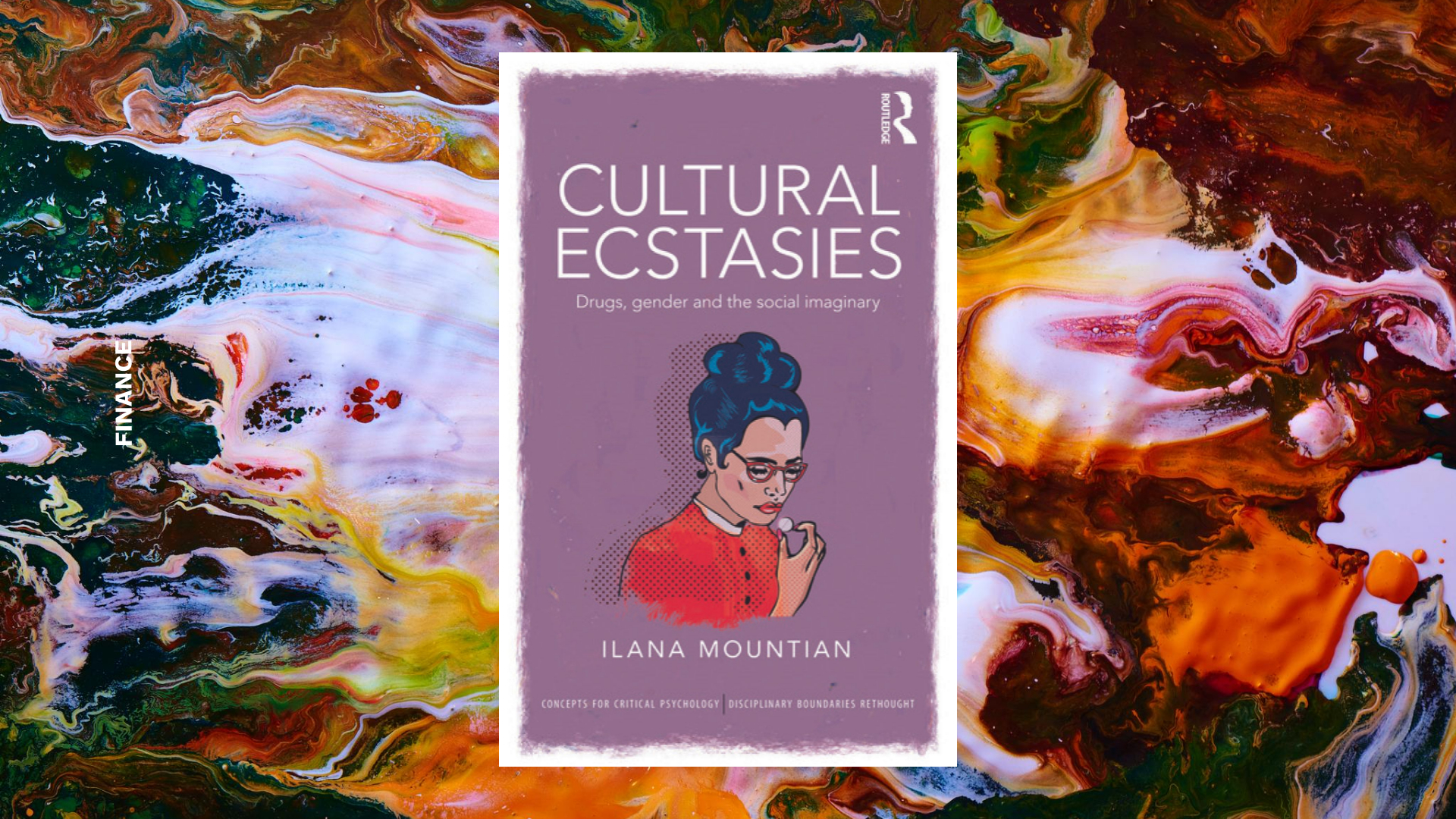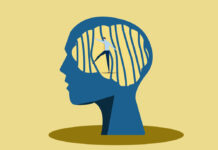Ilana Mountian is a researcher drawing on psychoanalytic, critical, decolonial, and feminist philosophies. She is the author of Cultural Ecstasies: Drugs, Gender, and the Social Imaginary, exploring discourses around drug use, gender, and drug policy. She is currently working on a book that will be published later this year by Routledge about otherness and mental health, focusing on immigration, drug use, and transsexuality.
Mountian is a member of the Discourse Unit, a group led by well-known critical psychologists Erica Burman and Ian Parker. The Discourse Unit is dedicated to providing teaching resources for qualitative and feminist work, producing radical academic work, and developing critical perspectives in action research.
Mountian is a psychoanalyst and a researcher at the research group Psychoanalysis and Society at the University of Sao Paulo. Previously a postdoctoral lecturer at the University of Sao Paulo Brazil (2012-2020) and Manchester Metropolitan University (2006-2019).
In this interview, she discusses intersectionality and drug use, the disease model of addiction, psychiatric labels, and psychiatry’s place in creating “otherness.”
The transcript below has been edited for length and clarity. Listen to the audio of the interview here.
Richard Sears: Can you tell us a bit about what brought you to this corner of the discipline? How did you end up researching drug use and gender?
Ilana Mountian: I am also a psychoanalyst, and I started working in the area of drug use through clinical practice in treatment services. I did my master’s degree on drug use, learning about the policies around drug use in Manchester in the UK.
In 1998, I met the group called Discourse Unit, of which I am currently a member. This group is coordinated by Ian Parker and Erica Burman. The Discourse Unit is a group that works with subjectivity and language, drawing on psychoanalysis, critical theories, feminists, postcolonial, and decolonial theories. I started to question how ideas about drugs and drug use impact gender.
There is no neutral thinking on gender and intersections between sexuality, race, and class. That was my doctorate and this book that I published. From there, a number of different areas converged when I started studying discourse on drug use.
This is a subject that relates to many different areas: health, economics, morality, gender, race, class, disability, and so forth. After my doctorate, I was invited to do another piece of research on young immigrants, refugees, and asylum seekers in the north of Manchester, looking at this group and drug use.
Sears: Can you speak to us a bit about the disease model of addiction? Where did that come from?
Mountian: Throughout my research for my Ph.D., I came in contact with a number of different theories and perspectives on drug use that actually made me think. I realized how specific discourses operate concerning drug use and how they come to life. They turn into a specific way of thinking about drug use and understanding drug use.
The way that psychiatry and our society think about drug use and mental health has changed throughout the years. During this research, I came across some studies from Berridge and Edwards called Opium and the People. This book highlights the changes in the views about opiate use in England and how this relates to a series of different actions in the 19th and 20th centuries.
Medicine was establishing itself as the institution we have now. Through religious discourses like the Temperance Movement and governmental policies around drug use, we eventually started to have some new regulations leading to the prohibition of specific drugs. The regulation of drugs included the classification of medical drugs—who can prescribe the drugs and so on. Up until then, opiates were very much disseminated and part of the cultural habits of the societies and used mostly for medical reasons by people self-medicating.
With this emergence and convergence of these different discourses: the medical, the religious, the legal, we have a change in the way of looking at drugs and looking at opium. In this case, from a cultural habit to a disease, which is a central point for research and, of course, treatment and drug policy. It is a specific way of understanding drug use.
Sears: In your view, is that model of addiction accurate? Is it helpful?
Mountian: When we talk about drugs and other moral issues, it is very hard to take a perspective that does not oscillate between good and evil. So, in this way, I think it’s very important to recognize that some people have a specific way of taking drugs related to the specific suffering they feel.
I do not think it’s helpful for us to ignore the suffering of some people connected to the way they relate to drugs because all people do not take drugs or develop a relationship with drugs in the same way. The problem with this view is how this diagnosis also became a way of psychologizing or psychiatrizing the subject.
This view individualizes the problem as if it not about the relationship of the subject to their contexts, where they live. It does not take into account many other issues that the person must relate to.
The definition of addiction itself, addiction as a disease or a specific way of using drugs, is not accurate. We have different definitions of addiction, and they are applied in a way that risks not listening to the subject, not listening to the person. In this sense, it separates the person from the physician, the psychiatrist.
There are still many debates about the diagnosis itself. We also have cultural differences in the way that people take drugs, for example, alcohol. Alcohol is a drug that I find particularly important in thinking about drug use. It is not an illegal drug, and we can see how this substance has been used throughout the years for all types of medical reasons, religious reasons, recreational reasons, and how people in different contexts use it in different ways.
I think it is useful to think about the drug itself, the substance, drawing on the pharmakon (Derrida), it is at the same time remedy and poison. This allows us to look at the relationship between the subject and this object, the drug. There is an attempt to remove only the poison part of it and stay only with the qualities that we are looking for — it’s very important to understand that they work and operate together and look at this relationship and the drug policies.
If we analyze the discourses about drug policies, it seems that the medical drugs are good and don’t produce any other effect. As we know, they do. It is the same with the drugs that are considered illegal. They are framed with all the evil already applied to them. In this way, research and treatment become a field that requires a lot of debate because of these moral positions that are immediately implied when we talk about drugs.
Sears: Do you think applying the label “addict” to someone is helpful?
Mountian: I think one important thing always to remember is that this is a medical classification. I always think it is important to look at how these medical views in discourses operate in our everyday life.
They are not only confined within the hospitals. These classifications come to be also a way that people think about themselves. At the same time, the way this labeling works and operates is significant for service users and marginalized communities and for specific groups that are often positioned in a marginalized way in discourses.
When we look, we have many divisions that operate within the way that this specific discourse is used and implemented. We can see divisions between North and South, and we can see the divisions between races. You can see the differences when we talk about gender and sexuality, and we have different drug policies according to these pre-established ideas. We could see these throughout our history and in the history of drug use from the classification of drugs that imply a prohibition and a specific moral way of using.
In this trajectory, we could see how specific groups were targeted. There is the work of Nancy Campbell. She talks about these ideas about the “crack mothers” and the specific ideas related to them. They were particularly demonized. This produced a specific way of othering, processes of marking the person as “the other.” For the person, this has effects. We are talking about drugs that are considered illegal, but also, we can think about these regarding legal drug use.
Which drugs are accepted for specific groups and many times prescribed for specific groups? For example, a woman who uses alcohol might be seen a specific way. At the same time, women are still the group most prescribed antidepressants worldwide. How does it work?
This is a crucial debate, and we need an important space to think about these ways of understanding drug use and not excluding the prescriptions that work in specific groups and specific ways. On this issue, I would like to mention the work of Elizabeth Ettore. She has produced several texts regarding women’s visibility and invisibility while also considering prescription drugs.
Sears: It is not uncommon in the United States for people seeking mental health treatment to end up in emergency rooms, and part of the mental health screening includes a drug test. In my experience, people who test positive for any drug they have not been prescribed will often get that label of substance use disorder applied to them, regardless of how they answer questions about substance use. Could you talk a little bit about how that person may be affected, somebody that’s not just diagnosed but misdiagnosed within that medical model.
Mountian: This is a critical question because it shows how medical classification, particularly when done in this way, silences people. We can see this happen, particularly for people who are looking for help. This is where we see very clearly the moral ideas attached to the word ‘drugs,’ so it also shows the discursive position that the person occupies in society.
We can see lay discourses in our everyday life, and they come into the medical establishments very quickly. So it’s always crucial to look at how labeling has effects and affects people.
On the other hand, the labeling has effects on the subject. It is still the case that the label of “mental illness” occupies a marginalized position in society, and this person carries this.
There are many debates about this labeling, how it is done, and the criteria used for the label itself. It is not always clear as we also have different definitions, and we have many authors that talk about this. I am thinking about Ivan Illich and Thomas Szasz.
For my PhD research, I interviewed drug users, people who took drugs in different contexts. I was very much interested in how people understand themselves regarding this label of drug use, what it means to the drug users. They were talking about this labeling in very different ways. Those who are not in treatment did not see themselves as drug users, and I am talking about drugs in general, not only illegal drugs.
Others who are in treatment, particularly in closed institutions, doing their detox, talked about themselves as drug users, and they were thinking about this label in a very institutionalized and medical way. They were talking about themselves as if we could hear the doctors talking about them.
Others in medical treatment were also using the label in specific ways according to the person they were talking to. When they talked about drug use to the doctor, they would tell them, “I’m a drug user.” When they were talking to their colleagues, they were not talking about themselves using this label. That was something that got my attention.
Other people were talking about how this label helped them identify their problems. Others were talking about how this label separated them from their families and their work. In some contexts, we could see how this label marginalizes people and communities, and groups. I think it is crucial to always look at the effects of labeling.
Sears: Some authors have pointed to psychiatry’s past complicity in oppressing women. I read recently about a diagnosis given by medical professionals in the United States called drapetomania. This diagnosis was given to people who fled from slavery to frame recapturing those people as morally correct. I wonder if you have seen similar themes in your research and if we’re still doing things like this to marginalized groups today?
Mountian: The book I am writing right now is very much talking about this. The effects of the labeling, how the label itself was produced throughout the years, and how it’s considering (or not) specific social categories like gender, sexuality, race, class, age. We can see how these categories are viewed by medicine, psychology, and the biomedical discourse. For example, In the over-prescription of psychiatric drugs to older people, we can see how age operates here.
If we look at the research on immigration, for example, we see concerns about people being framed in particular ways as having mental health disorders, rather than understanding the person within their context, because to immigrate requires many things. We can see their suffering, and I am always concerned that we jump to a diagnosis too fast. This also points out different ideas about health and mental health.
People do not have the same ideas about health and mental health. In my work with immigrants, we could see this difference. I am not saying that all the immigrants are the same because immigrants also come from different contexts. Interestingly, the ideas about health and mental health can also be dislocated in this encounter between the other and us, or between the other and the medical discourse because these other ideas can challenge our ways of diagnosing, labeling, and framing people in specific ways. For example, in the research with young people and drug use in Manchester that I’ve conducted, they didn’t use illegal drugs. They did not use any drugs. However, there was a concern with the over-prescription of anti-depressants to their mothers, as also seen in other studies.
Sears: You’ve mentioned immigrants and how sometimes a different perspective can lead to misdiagnosis. Do you think that is the group that’s most at risk for this stuff right now?
Mountian: We can also identify other groups. We are talking about these intersections between race, gender, class, etc. We can see how specific groups were medicalized and were diagnosed throughout the years.
We need to look locally to see how our groups are thought about and how this process of minoritization and othering happens. It is interesting to look at the process of labeling, of classifying people using psychiatric diagnosis, to look at the history of this diagnosis.
Homosexuality was a mental illness until recently. We can see how this labeling affects and has effects on people. For example, how transexual/transgender people work with this diagnosis is a very important issue.
Discursive associations, like those between women and madness and hysteria, develop quickly and then persevere. How this reverberates is crucial. Furthermore, how these discursive associations operate in the marginalization of specific groups such as LGBT people, Black people, is fundamental to be considered.
It’s hard to say what is the group that it’s going to be the most prescribed, but we have to look locally, in a situated way, to see how these labels are too easily or too quickly pushed on certain groups.
Sears: It may be the case that the substances that we decide to make illegal are ultimately kind of arbitrary and more of a political decision than a practical one. I wonder how you would respond to that idea, given your research around addiction and marginalized communities?
Mountian: We can see the convergence between the three major pillars of discourse: legal, medical, and religious. I think the moral part of it cannot be taken out of this equation. There were many talks during this period to classify what drugs are legal and illegal. We can see how these discourses were operating, particularly the moral and political views of specific groups.
What happened after the classification and prohibition of certain drugs is that people did not stop taking drugs. When we talk about drug use, we cannot separate it from the legal matters and the criminalized view of drug use. We actually have an increase in violence and drug use and a decrease in information and research about the use of drugs, not only for recreation but also for medical research.
With drugs that are considered illegal, research is much harder to do. We have users also put at risk because they do not know the quality of the drug they are taking. We have the crime and violence associated in this context, so I think it is essential to look at the effects of prohibition.
Sears: You’ve mentioned that prohibition may not be the most effective way to stop drug use. In your research, have you come across anything that is helpful for people that may see themselves as addicts? What helps people when they are struggling with that?
Mountian: First, I think it is important to understand how the person sees herself and self-regards this label, how it works. It can work in a way that is not helpful for their suffering, even increasing it. For others, though, it can be useful to think about themselves in a medicalized way.
One thing that I saw in my research, but also in my practice, is the importance of looking at the relationship between the subject and the drug. What is the meaning of this relationship, how does the person relate to the drug? We cannot look at the subject disregarding the context and how the social categories operate for the subject.
Another point that I and many in harm reduction perspectives highlight regards the moral view about drug use and the need to be questioned. It is vital to understand what it means for the subject and how the subject sometimes finds that drug use is not that important, or sometimes it is. Ultimately, it’s important to question and think about the moral view already implied in working with drug users.
Sears: You’re working now on a new book about mental health and otherness. Could you talk to us a little bit about the connection between the two?
Mountian: This book is the result of the past 20 years of research on drug use with immigrants and my research with transgender people.
I worked with ‘travestis,’ which is a specific self-identification of Brazilian transgender women. I have done two research projects concerning them. One regarding their access to education and one about older travestis, which is not that common as the transphobia they suffer is very high. This publication is going to have essays on these different groups.
What I could see is how specific groups are put in the position of the other through discourse. I was also very much interested in how, when deconstructing the discourse of psychiatry, we can see how psychiatry itself is also situated; it’s also contextualized. There is a tendency to look at psychology and psychiatry as a universal viewpoint about mental health and people, which it’s not. There is always the risk of reproducing specific discourses about the other that put the other in a more marginalized position.
Now I am thinking about and looking at the encounter between the other and psychiatry. How is this encounter? Can the other speak in medical services, for example, and how do we listen to the Other? How is the other produced even within the services? There are some questions here.
First, I think it is important to look at the quick diagnosis. Also, we can look at the context of the subject and how these specific social categories are often ignored or not taken into account by health practitioners.
For example, the effects of transphobia on the subject are crucial and need to be accounted for in health treatment. Sometimes we see even the opposite, that is, when in places that were there to treat people we find them displaying transphobic attitudes, which affects the subject. For example, they will not go to the hospital when they need to. We see the obstacles that these groups find to access healthcare.
Sears: What is something you learned while working on your books that many of us maybe don’t know, and maybe we could benefit from knowing?
Mountian: I have learned from the people I’ve interviewed and encountered and the groups that participated in the research. They brought a perspective that is not always found in medical books, psychological books, or even in the lectures. They were talking about themselves in these othering processes that they encountered.
What I find important here is how I could learn something about their suffering and what they were saying, but at the same time, how this could question our views on how to listen to the other. This is something that I have been working on for the past year. How can we listen? Because we are also situated. This is particularly important when looking at these relations between gender, race, class, age, disability, and other categories that appear out of balance.
Sears: I am wondering if you can recall any criticism you faced around your work? Any significant backlash you can recall?
Mountian: I think the critical work itself is conducive to debate, and debate is crucial for our work. Sometimes the debate can be hard. I think this is an area of research that is very important to be funded and that should have more space in academic, medical, and psychological areas because it is crucial for the practice.
****
MIA Reports are supported, in part, by a grant from the Open Society Foundations















